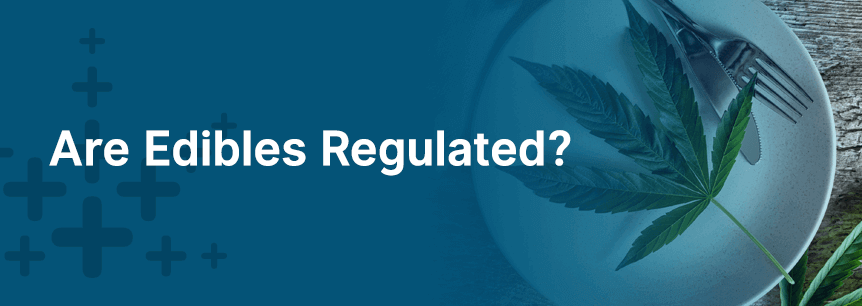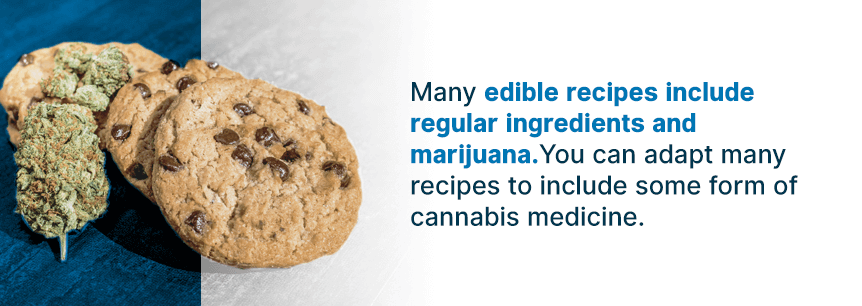
Many patients prefer to medicate with cannabis edibles because they give you an unconventional way to take medicine. They also have a discreet appearance that makes them useful for self-conscious patients. But while pharmaceuticals and food have regulations that keep people safe, edibles don’t have as many of these rules. Discover how the cannabis industry regulates edibles and what you can do to ensure you get the safe medicine you need.
The Food and Drug Administration (FDA) regulates drugs and food in the United States. They distinguish drugs from food as substances meant to address a disease or non-food items that impact the function or structure of the body. While “food” comes first in their name, the FDA focuses most of their enforcement on drugs. They do set some regulations on food, but they also count on producers to stay accountable. The FDA will take action when a violation happens instead of using the proactive approach they have toward drugs.
However, when a food label claims that the FDA authorizes only for drugs, they will order the producer to take it off. A producer can make a claim not already approved for food if it has scientific evidence to back it up. But, the FDA approves these statements only if they don’t imply that the food is a drug according to the FDA’s definition.
So, where does that leave edibles? Federal law does not consider any cannabis-infused product legal. However, the FDA does not enforce this aspect of the law. They intervene when an edible label makes a health claim because they do not approve of any marijuana product. Otherwise, they have no rules for quality assurance in cannabis edibles. This means they have no official regulations for ingredients, preparation or packaging.
On the state level, edible regulations vary. The National Environmental Health Association names 10 important topic areas in cannabis food safety laws:
State regulations cover some or all of these areas. However, the cannabis industry can have difficulty enforcing these regulations. Testing methods and equipment have high costs because of the differences in cannabinoid concentration through each step of production. An edible and its ingredients can lose cannabinoids during the process, requiring another test. This does not mean all edibles are dangerous, but labels don’t always have the correct information.
The edibles at a dispensary could have issues with ingredients, pesticide content, preparation methods or another aspect of food safety. Good dispensaries do their best to stay compliant and offer quality products, but you can do your part to make sure you get the product you want. Research your state’s labeling and food safety policies for edibles, and look into any prior incidents. Use a website like MarijuanaDoctors.com to see if your dispensary has ratings from customers.
You can also ask your dispensary staff questions about their edibles. If the dispensary makes them on-site, you can ask about their process and food safety practices. A trained staff member should know the answers to these kinds of questions or where to find them.
If you want the most control over your edibles as possible, you make them yourself. Many edible recipes include regular ingredients and marijuana. Patients who have access to legal marijuana flower or oil can make edibles just like regular food. You can adapt many recipes to include some form of cannabis medicine.

We recommend patients who make their own edibles verify the quality of the flower or oil they use. Your dispensary may list the sources and cannabinoid profiles of their strains, which you can use to determine their product quality. You can also check the label of the cannabis oil you plan to use for its ingredients. See if your dispensary sells organic marijuana with no pesticides. When you have access to the right resources, you may also be able to grow your own cannabis.
Three simple recipes for marijuana ingredients will help you convert any recipe into a medicinal one. Coconut oil infused with cannabis or cannabutter, which is butter mixed with marijuana, can replace fats and oils. The fat also helps you absorb THC into your system. When oil or cannabutter doesn’t fit your recipe, you can also try marijuana flour, which is essentially ground bud. These homemade ingredients help you distribute the marijuana in the food for consistent effects and taste.
At MarijuanaDoctors.com, we want to serve as your number one source for medical marijuana information. That’s why we have a directory of dispensaries throughout the United States. You can check a dispensary’s ratings from our patients to learn about their product quality.
For more advice on marijuana edibles and your treatment, visit a marijuana-trained doctor. The MarijuanaDoctors.com physician listings pages feature physicians across the country ready to help.
No Information on MarijuanaDoctors.Com should be used to diagnose, treat, prevent or cure any disease or condition. You can view our Full Disclaimer here.